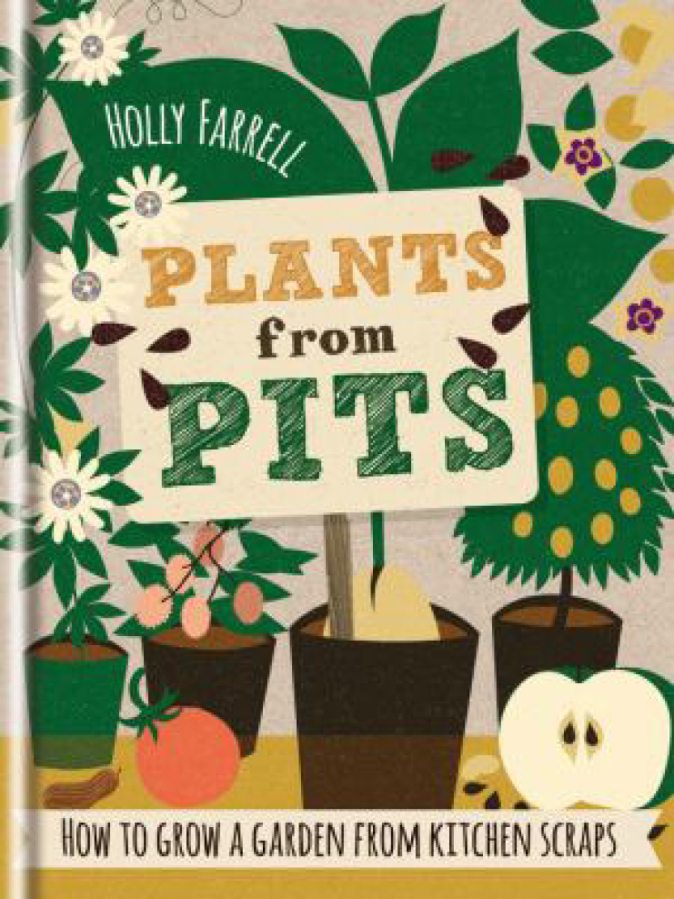Ready for a “pit-y” party? The best part about this party is that the pits will definitely cause tears — tears of joy, that is. After all, there’s something pretty great about taking a pit — as plain as plain can be — and helping it to transform into a horticultural Cinderella.
Not convinced that you have the ability to coax a plant from a pit? Take heart because author Holly Farrell has potential green thumb firmly in hand with her “Plants from Pits” guide to kitchen-scrap gardening.
Before you start worrying about which pit is the best fit for your garden, be sure to read the first two chapters: How Plants Grow and How to Grow Plants Successfully. I don’t know about you, but it’s been a lot of years since I had a biology class, so a refresher on pit properties — vegetative reproduction, seed coats, dormancy, etc. — can make the whole growing process a lot more meaningful. It’s especially good to remember that “a pit is a seed contained within a fruit or vegetable.” I bring this up because when you reach chapter three, The Pits, and you see entries for fruits such as grapes, tomatoes, and blueberries, you might do what I did and think, hey, those are seeds not pits. Well, if a rose is a rose is a rose, a pit is a seed, and so on and so forth.
Once you’ve boned up on pit anatomy and the proper care and feeding of pits, your pit toolkit is nearly complete. Chapter three is where the real excitement starts because you’ll learn about specific pits and how to nurture them based on two important factors: ease and patience.



